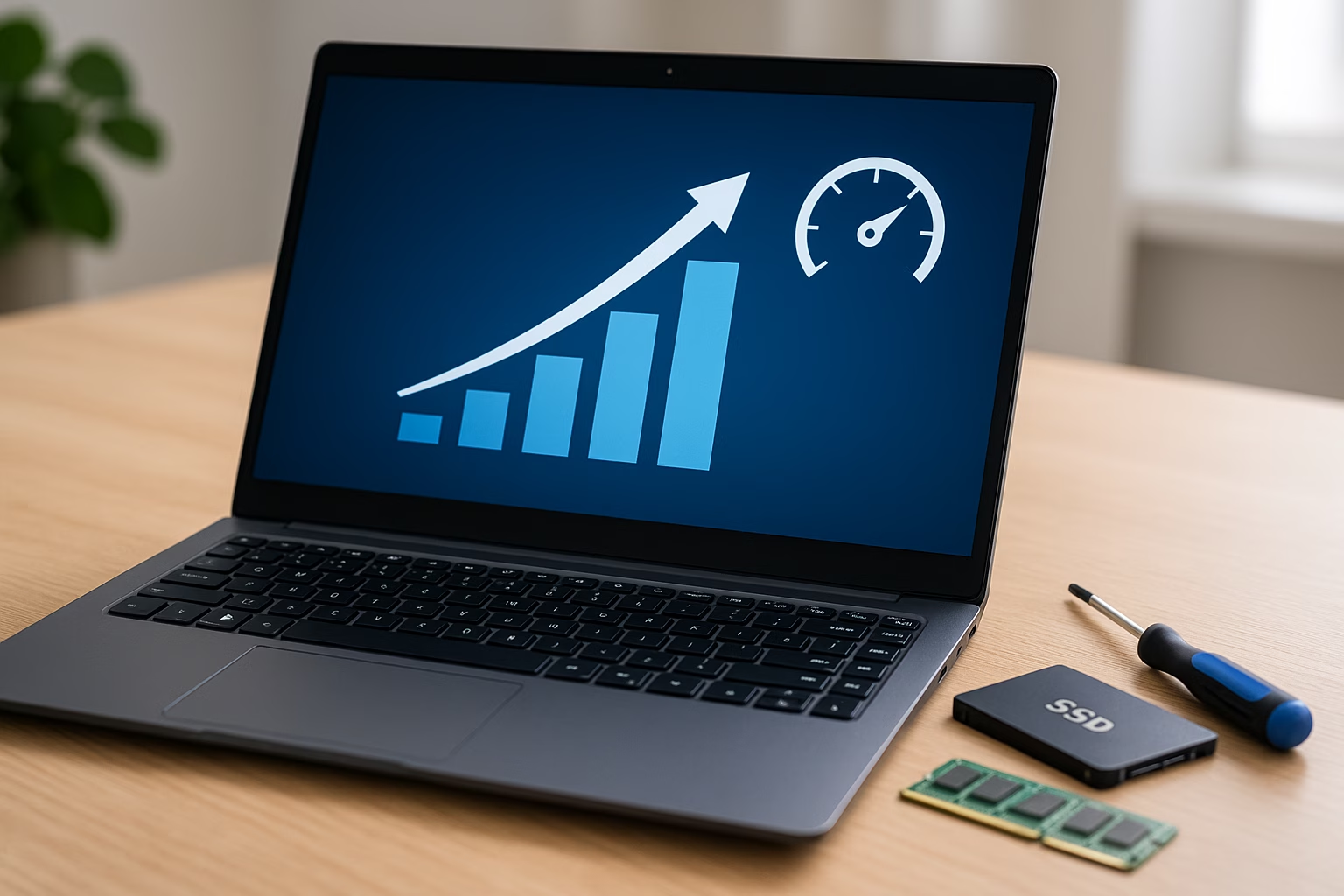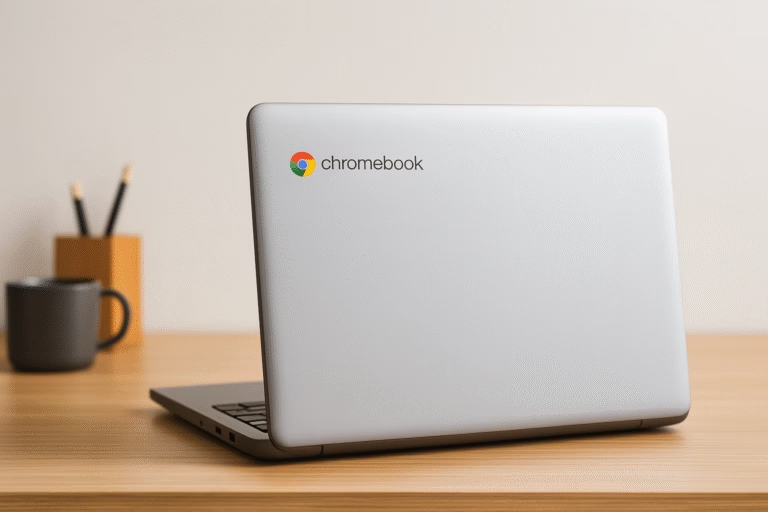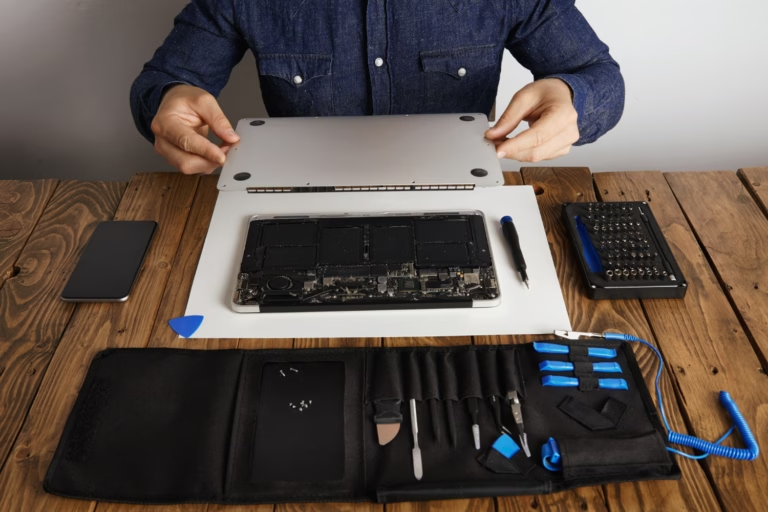How to Speed Up Your Windows Laptop in 2025: Easy Fixes That Work

Is your Windows laptop running slow and driving you crazy? Over time, even well-built machines can start to slow down, whether from too many startup apps, low storage, or outdated hardware. If you’ve been searching for how to speed up Windows laptop performance, the good news is that there are several effective ways to revive your device without needing to replace it.
In this guide, we’ll walk you through easy fixes to speed up your Windows laptop in 2025, plus hardware upgrades that can dramatically improve performance.
1. Check for Windows Updates
Sometimes, speeding up your laptop is as simple as keeping it up to date. Microsoft regularly releases patches that not only improve security but also address bugs and performance issues.
How to Check for Updates
- Click the Start menu and open Settings.
- Navigate to Windows Update.
- Click Check for updates to see if any are available.
- Install updates and restart your device if prompted.
Staying current with updates ensures that your laptop is running optimally with the latest performance improvements from Microsoft.
2. Uninstall Unnecessary Programs
One of the quickest ways to speed up your Windows laptop is by removing programs you no longer use. Over time, laptops accumulate bloatware—pre-installed software or trial programs you may never have needed—that can slow things down by running background processes and eating up resources.
How to Uninstall Programs
- Click the Start menu and select Settings.
- Navigate to Apps > Installed apps (on Windows 11) or Apps & Features (on Windows 10).
- Browse the list and uninstall apps you no longer need by clicking Uninstall.
Pro Tip: Be cautious not to remove system-critical applications. If you’re unsure about a program, a quick web search can help you decide whether it’s safe to remove.
Freeing up space and reducing background activity can noticeably speed up your Windows laptop, especially on older machines with limited RAM.
3. Disable Startup Programs
If your laptop takes forever to boot up, too many startup programs might be the culprit. Many applications are set to launch automatically when Windows starts, which can significantly slow down both your boot time and overall system performance.
By disabling unnecessary startup apps, you can speed up your Windows laptop right from the moment you turn it on.
How to Disable Startup Programs
- Press Ctrl + Shift + Esc to open Task Manager.
- Click the Startup apps tab.
- Review the list of programs that launch at startup.
- Right-click any program you don’t need to start automatically and select Disable.
Tip: Task Manager provides an Impact rating (Low, Medium, High) to help you identify which programs have the biggest effect on startup performance.
Trimming down your startup list can make your laptop feel faster, not just at boot, but throughout your work session.
4. Free Up Storage Space
Running low on storage can seriously slow down your Windows laptop. When your hard drive or SSD is nearly full, Windows has less space to manage temporary files and system processes, which leads to sluggish performance.
Clearing out unnecessary files, old downloads, and system clutter can help reclaim space and speed up your Windows laptop.
How to Clean Up Storage
- Open Settings > System > Storage.
- Turn on Storage Sense to automatically remove temporary files.
- Click on Temporary files to manually delete items like:
- Recycle Bin contents
- Temporary system files
- Previous Windows installations
Alternatively, you can use the built-in Disk Cleanup tool:
- Type Disk Cleanup in the Start menu search bar.
- Select the drive you want to clean.
- Choose the file types to remove and click OK.
Bonus Tip: Consider transferring large files like videos and photos to an external drive or cloud storage to free up internal space.
Keeping your drive less cluttered ensures smoother operation and faster system responsiveness.
5. Upgrade to an SSD
If your laptop still runs on a traditional hard drive (HDD), one of the most effective ways to speed up your Windows laptop is by upgrading to a Solid State Drive (SSD). An SSD dramatically improves boot times, file transfers, and overall system responsiveness.
Many older laptops can benefit from this affordable upgrade, and it often feels like using a brand-new machine afterward.
Benefits of Upgrading to an SSD
- Faster boot and shutdown times
- Quicker file access and program launches
- Improved multitasking performance
- Enhanced reliability (SSDs have no moving parts)
Compatibility Tip: Before buying an SSD, check whether your laptop supports a 2.5″ SATA SSD (common in older laptops) or an M.2 SSD (common in newer models). Not all laptops support both, so reviewing your laptop’s specs or manual is important.
Note: Some laptops—especially ultra-thin models or entry-level devices—have non-upgradeable storage that’s soldered directly to the motherboard. Always confirm upgrade compatibility through the manufacturer’s documentation before purchasing an SSD.
Recommended SSDs
- 2.5″ SATA SSD:
- M.2 SSD:
Both options are reliable, widely compatible, and offer excellent performance for the price.
Need help? If you’re not comfortable upgrading the drive yourself, SysPros can handle the SSD installation for you. Contact us to schedule a hardware upgrade service.
Upgrading to an SSD is one of the most impactful ways to extend the life and performance of a Windows laptop, especially if it’s a few years old.
6. Add More RAM
Another effective way to speed up your Windows laptop is by upgrading the RAM (Random Access Memory). If your laptop struggles when multiple applications or browser tabs are open, it might be because it lacks sufficient memory.
Upgrading from 4GB to 8GB or 16GB of RAM can significantly improve multitasking and overall system performance, especially on machines running Windows 10 or Windows 11.
How to Know if You Need More RAM
- Your laptop slows down with several browser tabs open.
- Applications like Microsoft Office or Zoom lag or crash frequently.
- Task Manager shows high memory usage under the Performance tab.
Recommended RAM Upgrades
Note: The following RAM recommendations are for laptops that support DDR4 memory, which is common in most systems running Windows 10 and Windows 11. If your laptop is older and uses DDR3 RAM, check your device specifications to ensure compatibility before purchasing.
For most users, adding 8GB or 16GB of DDR4 RAM will provide a significant boost in speed and responsiveness:
- Crucial 8GB DDR4 SODIMM:
- Crucial 16GB DDR4 SODIMM:
Tips for a Smooth RAM Upgrade
- Match Specs When Adding RAM: If you’re adding RAM to an existing module, try to match the speed (MHz), capacity, and generation (DDR3 vs DDR4) for best results.
- Dual-Channel Benefits: Installing two matching modules can enable dual-channel memory, providing a modest performance boost, especially in multitasking and graphics tasks.
- RAM Speed Consideration: While faster RAM speeds (higher MHz) can improve performance in demanding applications, increasing RAM capacity typically makes a bigger difference for everyday use.
- Stick with Reputable Brands: Choosing well-known manufacturers like Crucial, Corsair, or Kingston ensures better reliability and compatibility.
- Check Maximum Supported RAM: Always verify your laptop’s maximum supported RAM capacity and memory type. Tools like Crucial’s System Scanner can help you identify what’s compatible.
- Check for Upgradeability: Some modern laptops, especially ultra-thin models, have non-upgradeable, soldered RAM—so confirm your device’s upgrade potential before buying.
Upgrading RAM can provide a noticeable speed boost, particularly for multitasking-heavy workflows or remote work setups.
7. Adjust Power Settings
Your laptop’s power settings can have a direct impact on performance, especially if it’s set to prioritize battery life over speed. Adjusting the power plan to favor performance can help you speed up your Windows laptop, particularly during demanding tasks.
How to Adjust Power Settings
- Click the Start menu and open Settings.
- Navigate to System > Power & Battery.
- Under Power Mode, choose Best Performance.
On some systems, you may need to access Control Panel > Hardware and Sound > Power Options to select a High Performance power plan.
Tip: If you frequently use your laptop plugged in, keeping it on Best Performance mode can make a noticeable difference in speed and responsiveness.
Switching to a performance-focused power plan ensures that your laptop is using its hardware to its fullest potential, rather than throttling speed to save battery.
8. Check for Malware
Malware, spyware, and other unwanted programs can severely impact your laptop’s speed and overall performance. Even if you’re careful online, malicious software can sneak in through compromised downloads, email attachments, or deceptive websites.
Performing regular malware scans is essential to keeping your system running smoothly and ensuring that performance issues aren’t caused by security threats.
How to Scan for Malware
- Open Windows Security via the Start menu.
- Navigate to Virus & threat protection.
- Click Quick scan or choose Full scan for a more thorough check.
Do You Need Additional Anti-Malware Software?
For most users, Microsoft Defender Antivirus, built into Windows 10 and 11, offers robust and regularly updated protection. It’s sufficient for everyday use when paired with safe browsing habits and keeping your system updated.
However, if you want an extra layer of security—especially to guard against ransomware, adware, and potentially unwanted programs—third-party tools like Malwarebytes Premium can complement Defender:
- Malwarebytes Premium:
Tip: No matter which solution you use, keeping your security software up to date is key to protecting against the latest threats.
By maintaining good security hygiene and performing occasional scans, you can eliminate malware as a potential cause of slow laptop performance.
Bonus Tips to Keep Your Windows Laptop Running Fast
In addition to the steps we’ve covered, here are a few extra tips to help you maintain peak performance:
- Keep Drivers Updated: Outdated drivers—especially for graphics, chipset, and network components—can cause slowdowns or system instability. Check for driver updates through Windows Update or your device manufacturer’s website.
- Restart Regularly: Restarting your laptop clears memory and stops lingering background processes, which can improve performance if you typically leave it running for days at a time.
- Run Disk Cleanup: Even with Storage Sense enabled, running Disk Cleanup occasionally can remove hidden junk files and system logs.
- Check Task Manager for Resource Hogs: Press Ctrl + Shift + Esc to open Task Manager and see which apps or processes are consuming the most CPU, memory, or disk resources.
- Consider a Clean Install of Windows: If your laptop is still sluggish despite these optimizations, performing a clean reinstall of Windows can often restore it to like-new performance. Just be sure to back up your data first.
By combining these maintenance tips with the upgrades and settings adjustments we’ve covered, you can maximize the lifespan and speed of your Windows laptop.
Frequently Asked Questions
If your laptop slows down when you open multiple browser tabs or run several apps at once, it may be running low on available memory. You can check by opening Task Manager > Performance tab to see if your memory usage is consistently high.
Yes, upgrading from a traditional hard drive to an SSD is one of the most impactful ways to speed up an older Windows laptop. You’ll see faster boot times, quicker file access, and smoother overall performance.
For most users, Microsoft Defender Antivirus provides sufficient protection, especially when combined with safe browsing habits and regular system updates. For additional peace of mind, tools like Malwarebytes Premium can offer extra protection against ransomware and adware.
If your laptop is still sluggish despite following these steps, it might be due to outdated hardware or components that can’t be upgraded. In that case, it may be time to consider a replacement. Check out our Laptop Buying Guides for the latest recommendations.
Final Thoughts
A slow laptop doesn’t always mean it’s time for a replacement. By following these tips on how to speed up your Windows laptop, you can often restore its performance with just a few settings tweaks, regular maintenance, or affordable hardware upgrades like RAM or an SSD.
If these steps don’t resolve your issues—or if your device is simply too outdated—it might be time to consider an upgrade. Be sure to check out our other guides for buying tips and upgrade advice:
- Guide to Buying Refurbished Laptops in 2025: What to Know & Where to Shop
- Best Laptops for Students in 2025
Or, if you’d like personalized help upgrading or replacing your laptop, SysPros Technologies offers consulting and hardware upgrade services. Contact us here to get started.


